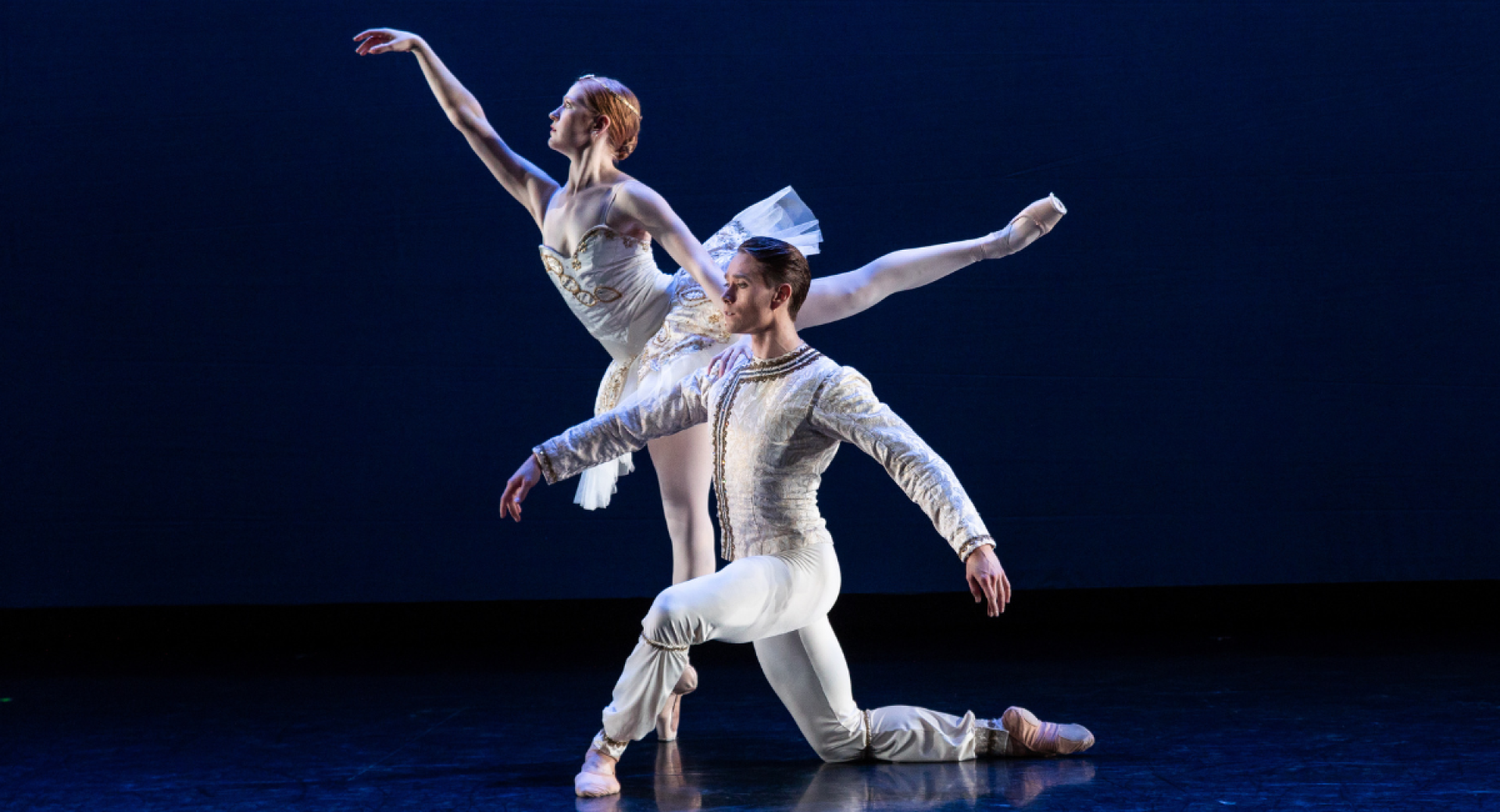
When To Clap During Classical Ballet
If you’re unsure when to clap during a ballet performance, you’re not alone. As an audience member, it can be hard to remember the different expectations between dance and other art forms (orchestra, theater, etc.), and even more so among different types of ballet performances.
The good news is, when it comes to short contemporary works (such as those in Genesis and MKE MIX) and modern story ballets (such as Michael Pink’s Dracula and Peter Pan), the rules are the same as theater: clap at the end of a scene and the end of the production. Classical ballet, however, can be much trickier.
If you want to avoid clapping in a silent theatre—or being the only one not to clap—read below to learn what you’ll see at any classical ballet performance and when to clap for our talented dancers.
The Grand Pas De Deux
Other Common Forms
The Grand Pas De Deux
In classical ballet, a pas de deux (translating literally into “step-of-two") is performed by a female and male dancer. Years of training and conditioning are needed for any successful pas de deux— not to mention the importance of theatrics, musicality, chemistry, and so much more!— making this one of the most unforgettable moments in any classical ballet.
A grand pas de deux is considered the piéce de résistance of a classical full-length performance. It is a more structured version of a pas de deux consisting of five separate sections labeled the entree, adagio, variation (1 and 2), and coda.
Entree
While current English might have you believe an “entree" is the main dish itself, the word has historically been used to indicate an “entrance,” introducing a key moment or climax to a performance. This may be the first appearance of principal dancers on stage, sometimes with additional dancers entering simultaneously or at separate times.
Is it ok to clap?
Yes— on a character’s first appearance. Most of the time, the audience will clap for the first appearance of the principal artists in the show.
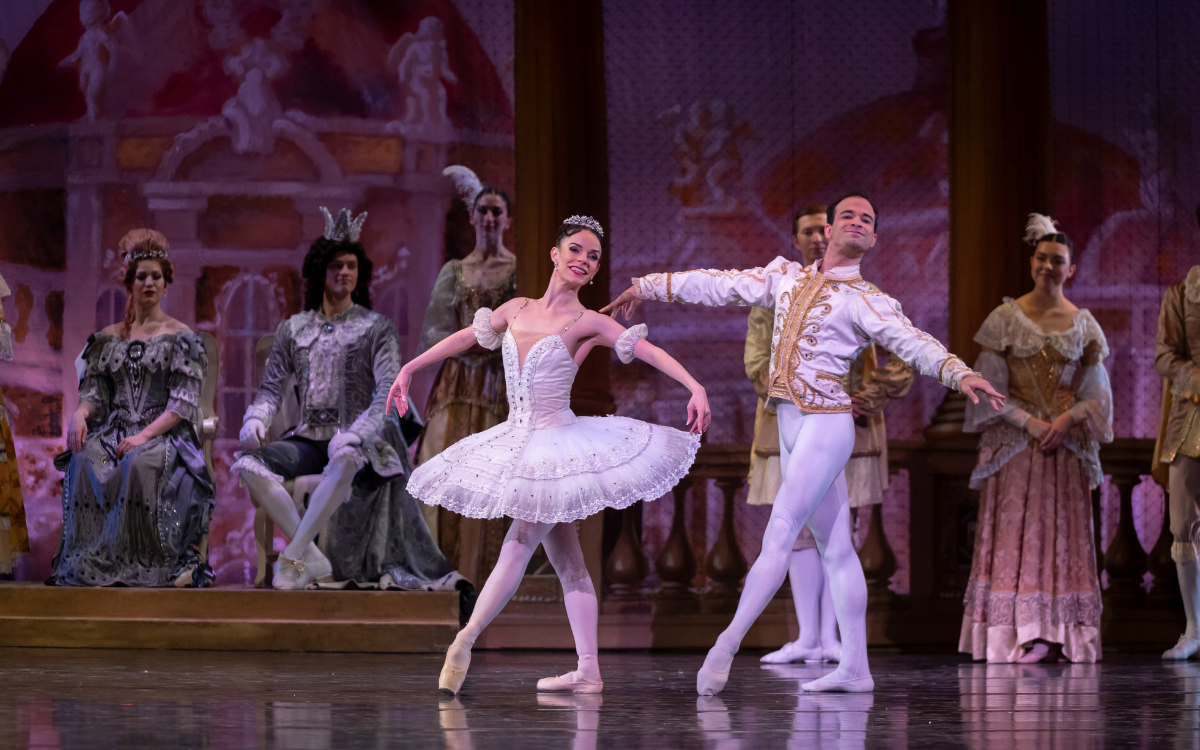
Marie Harrison-Collins and Randy Crespo perform in Michael Pink's Sleeping Beauty. Photo Iryna Levit.
Adagio
The second portion of a grand pas de deux is an elaborate and graceful partnering between the two dancers. As adagio translates to “slowly,” this section usually involves some of the most advanced ballet choreography as the two dancers support one another in movements that can’t be achieved solo.
Often, the male dancer acts as a stabilizing structure for the female dancer, helping her maintain poise while lifting, turning, and supporting her. Sometimes his arm will be used as a “barre” so that the she may perform balancing feats that would be difficult or near impossible to do without assistance.
Is it ok to clap?
Yes— after particularly fantastic feats. Most dancers agree that they like to hear recognition from the audience upon iconic or challenging moments of choreography.
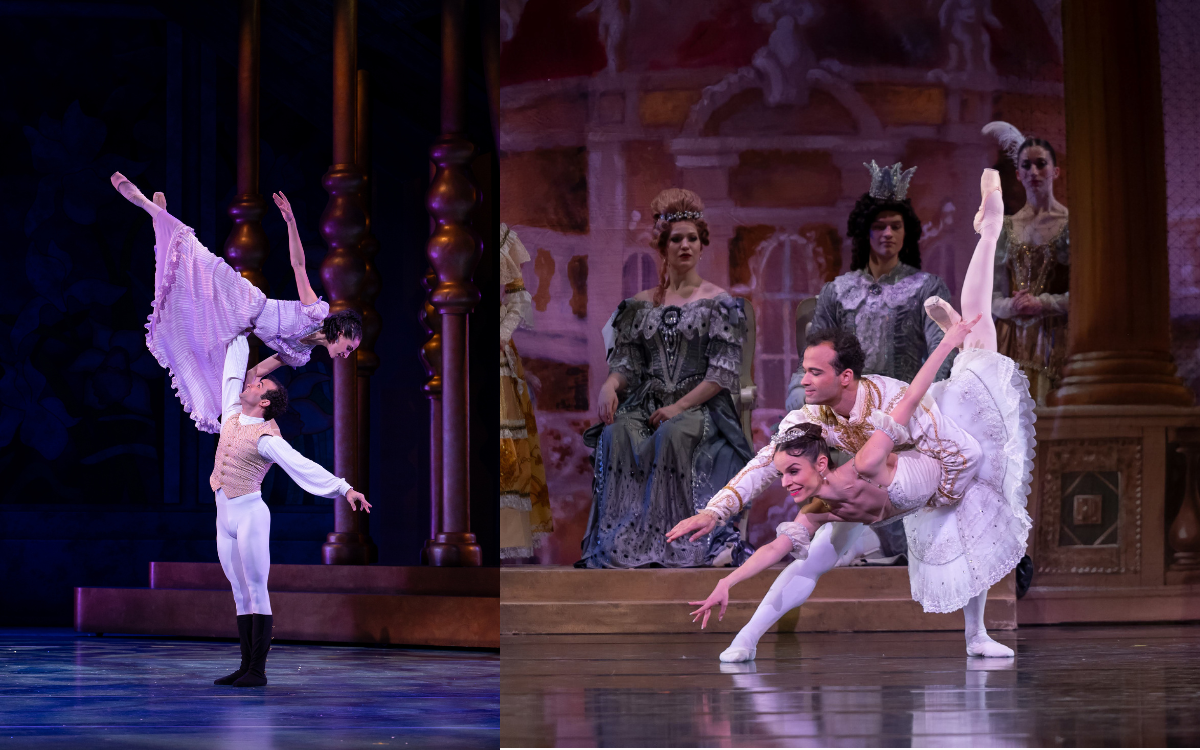
Marize Fumero (left) and Marie Harrison-Collins (right) perform notable moments with Randy Crespo in Michael Pink's The Nutcracker and Sleeping Beauty.
Photos Rachel Malehorn and Iryna Levit
Variations (1 & 2)
After the completion of the adagio, the dancers separate to have their own moments in center stage. Here, “variation” refers to a solo dance.
This two-part section usually features first the male and then the female dancers. Variations display the full athleticism of each individual and the qualities at which they excel most.
Is it ok to clap?
Yes— at the conclusion of a variation. With some small exceptions, most audiences will clap after a variation has concluded so they do not throw off the dancer's rhythm in the moment.
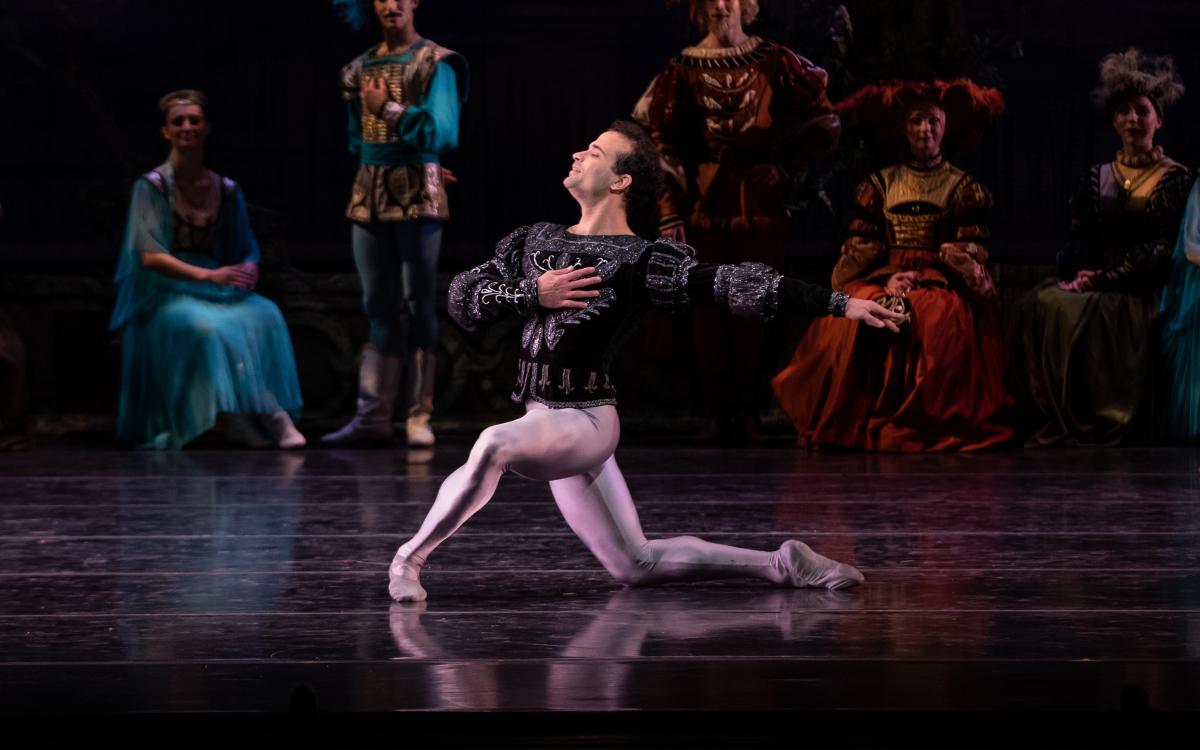
Randy Crespo performs Siegfried's variation in Michael Pink's Swan Lake. Photo Rachel Malehorn.
Coda
The final section of the grand pas de deux is the coda, meaning “tail.” This section often references earlier segments of the pas de deux and adds some changes to the adagio or variation sections. Often, the coda ends in a grand musical climax.
Is it ok to clap?
Yes— at the end of the coda. This clapping will conclude the grand pas de deux and signals the best time to clap for all the dancer’s artistry and achievement in the pas de deux. Think of this moment like a smaller curtain call before the end of the show.
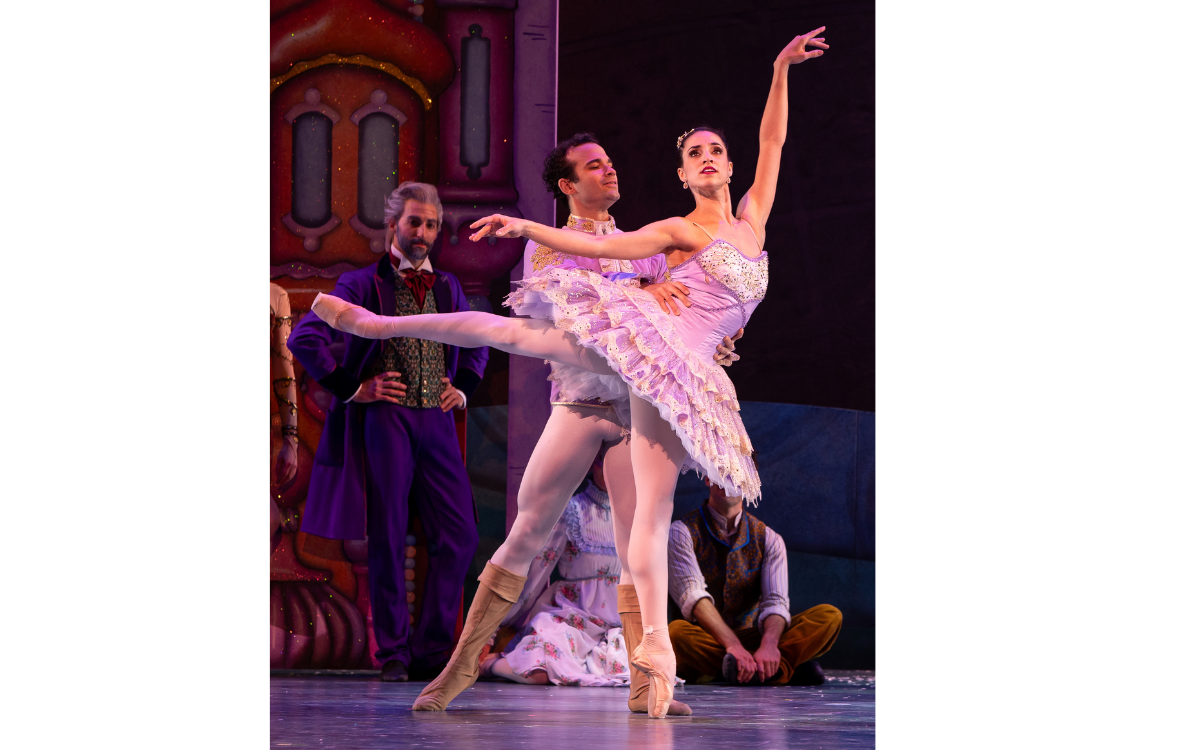
Marize Fumero and Randy Crespo finish the Grand Pas de Deux between the Nutcracker Prince and Sugar Plum Fairy in Michael Pink's The Nutcracker. Photo Rachel Malehorn.
Other Common Forms
While a grand pas de deux may be one of the most widely known sequences within classical ballet, it is far from the only sequence. Some of the most iconic ballets, from Swan Lake to The Nutcracker, feature dances with varying numbers of dancers, all with a unique narrative and skill-centric purpose.
Is it ok to clap?
Yes— at the conclusion. While these other sections all vary in structure, they are all relatively shorter than a grand pas de deux, so save your applause for the end.
Pas De Trois
Similar in format to the pas de deux, the pas de trois features three dancers rather than two. Unlike the pas de deux, there are no set gender expectations for the three dancers. Another unique feature is that there is no adagio section; rather, there is just the introductory entree, three variations (one for each dancer), and a coda to finish the sequence.
While a pas de trois is a little less common than a pas de deux, keep an eye open for it in famous ballets such as Petipa’s Swan Lake or Balanchine’s Jewels.

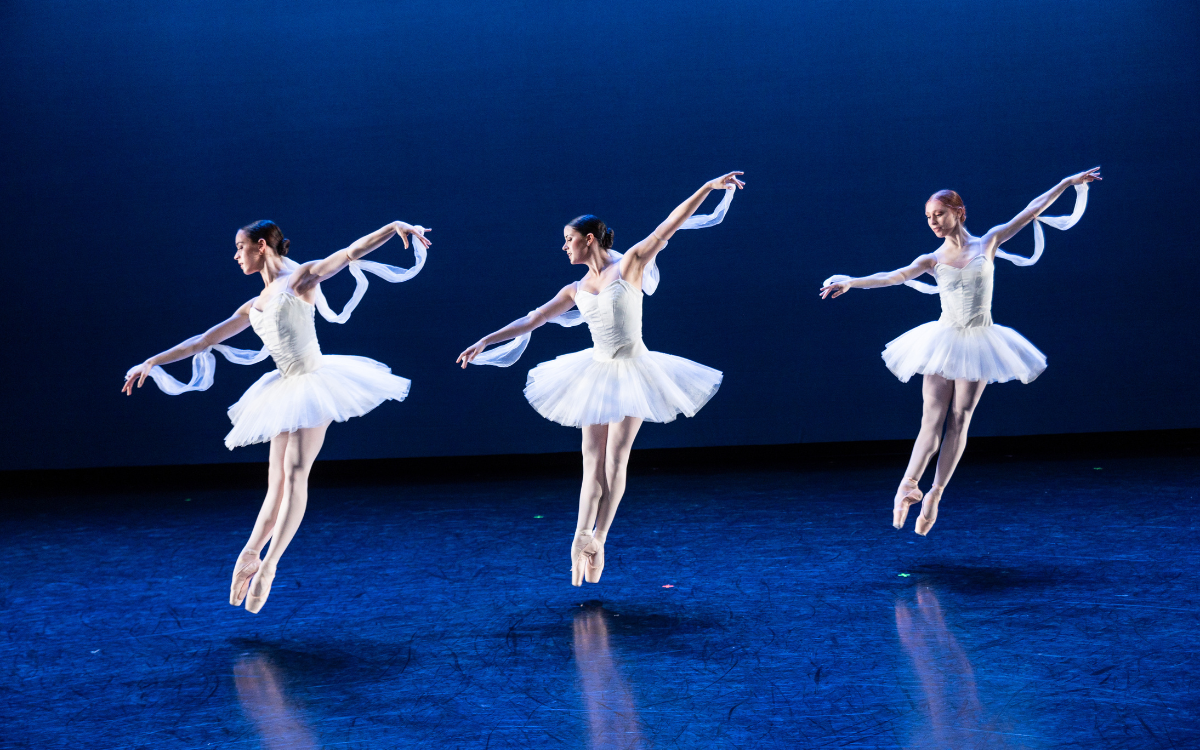
Three Milwaukee Ballet Company Artists perform a Pas de Trois from La Bayadére. Photo Rachel Malehorn.
Divertissement
Not specifically designed for a certain number of dancers, a divertissement, often referred to in the sense of ‘diversion’ or ‘amusement,’ is a section of a ballet meant for entertainment and not plot.
Divertissements often display the most “fun” moments in a performance as the audience enjoys the world-building of dance rather than its narrative function. Sometimes, a performance may actually be a series of divertissements loosely stitched together with an overarching plot, the most famous of which being The Nutcracker.
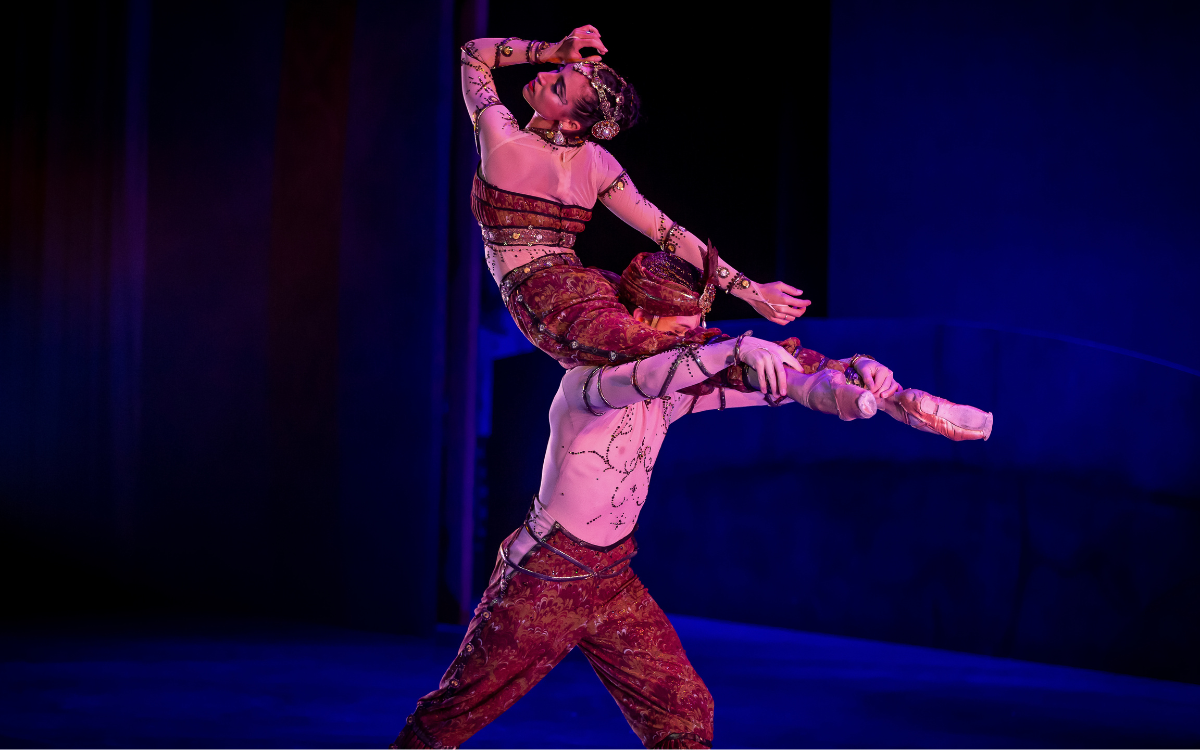
Marize Fumero and Parker Brasser Vos perform the "Oasis Couple" Divertissment in Michael Pink's The Nutcracker: Drosselmeyer's Imaginarium. Photo Nathaniel Davauer.
Pas De Quatre
A pas de quatre features four dancers and often functions as a divertissement. The structure of a pas de quatre is much looser than that of a pas de trois or grand pas. Since a pas de quatre does not typically advance the plot, there is not a set structure followed between classical ballets.
The first ever pas de quatre, choreographed by Jules Perrot, brought 4 of the greatest ballerinas of the mid-19th century together, and its immediate success cemented this style in ballet’s history. One of the most famous since has come from Swan Lake’s “Dance of the Little Swans.”
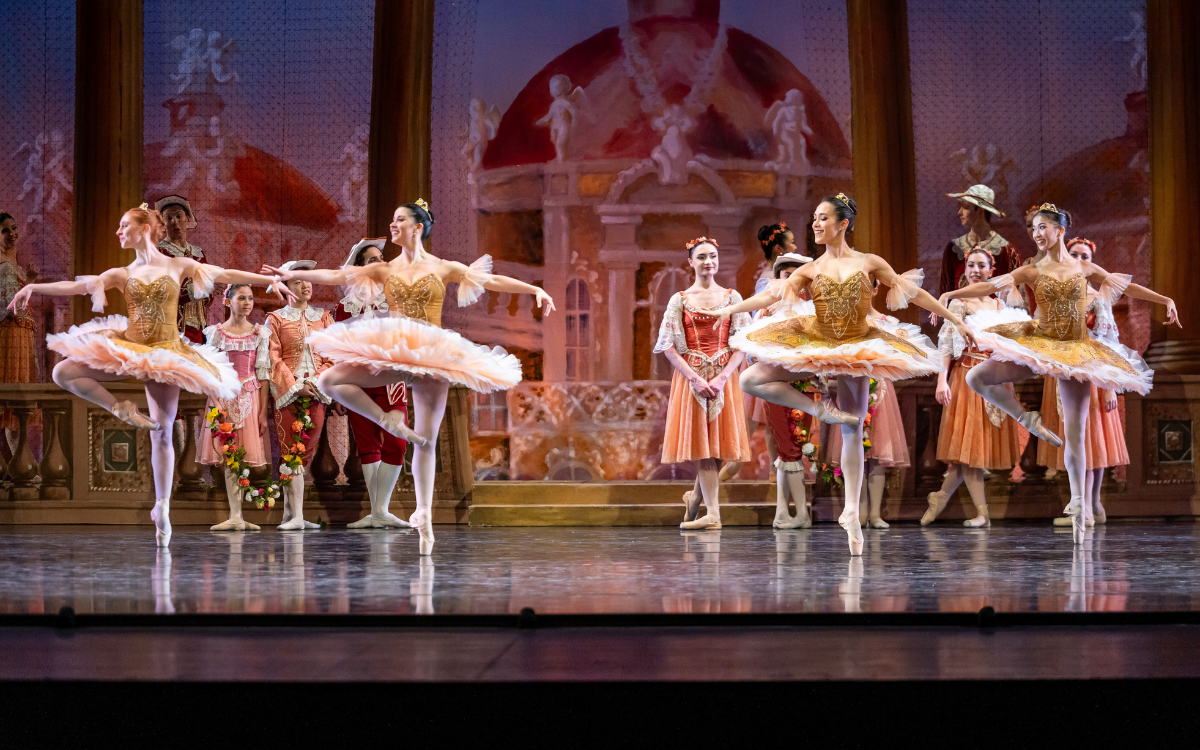
Four Milwaukee Ballet Company Artists perform a Pas de Quatre from Michael Pink's Sleeping Beauty. Photo Iryna Levit.
While there are countless more unique sequences in classical ballets, this list gives a basic overview of some of the most popular and enduring types of all time.
As for when to clap: remember that the specific guidelines above are just that: guidelines! It is still beneficial to applaud when everyone else is, even if it’s unexpected. Live theater is a unique experience, and audiences will have different approaches to their appreciation. In this case, it’s always better to go with the crowd!
Either way, the next time you see something classic—be it a holiday favorite like The Nutcracker or a haunting beauty like Giselle—you can be the expert on identifying and enjoying the biggest moments and most iconic scenes of the production. We applaud YOU for your dedication to our art form.
